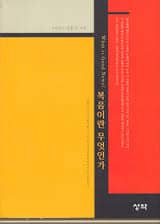
바나하-타르스키 역설과 제한속죄 (Banach–Tarski Paradox and Limited Atonement)
[한글 번역은 아래에]
Even the Reformed Christians struggle with the doctrine of Limited Atonement with the verse like “He [Jesus] is the propitiation for our sins, and not for ours only but also for the sins of the whole world.” (1 John 2:2). The issue is that
- “If” Jesus paid the debt of the sins of the whole world, then God has no reason to punish anyone.
- But we clearly observe—both empirically and scripturally—that universal salvation is not true.
- But 1 John 2:2 seems to suggest the contrary.
The resolution of this apparent contradiction is that the quality of the propitiation Jesus prepared through his suffering on the cross is sufficient for the sin of the whole world. But God accepted it and made it an effective atonement for some. This might still sound illogical, but as a mathematician I don’t see any contradiction. Let me explain using some analogies.
Suppose I have a solid sphere with radius of 1 foot. According to Banach and Tarski’s Theorem, I can disintegrate this sphere, recollect them, and come up with two exact copies of the original sphere, each having radius of 1 foot. That means, conversely, even though I have two solid spheres, each with radius 1 foot, I can disintegrate them and patch them up again in such a way that I only have one sphere with radius 1 foot, without any remainder.
So, if you allow me to use this picture to illustrate the doctrine of Limited Atonement, let each of the two spheres represent the sins of the saved and unsaved; Jesus’ suffering provided one sphere which God made it cover the sins of the saved; yet, God could have made that one sphere into two and have it cover both the saved and the unsaved.
If I use more mathematical jargon, I could say that if A is the set of the suffering of Jesus, B the set of the sins of the saved, and C the set of the sins of the unsaved, then there exists a bijection from A to B, and a bijection from A to B union C.
Mathematicians are used to this stuff. For example, let A be the set of positive integers {1,2,3,…}, let B be the set of even numbers {2,4,6,…}, and let C be the set of odd numbers {1,3,5,…}. Then there is an obvious one-to-one correspondence between the set A and B union C because B union C is same as A. But we can also make a one-to-one correspondence between A and B, using the fact that each even number can be written as “2 times n” where n is some positive integers. So we can pair 1 with 2 times 1, which is 2; pair 2 with 2 times 2, which is 4; and so on. This way we can pair members of A with members of B and there will be no member left out in either of the sets.
Thus, I see no contradiction between the two statements “Jesus is the propitiation of the whole world” and “Jesus’ atonement was effective and he saved everyone that is in him”. The doctrine of Limited Atonement is the doctrine that is consistent with the scripture and with our observation of the world.
바나하-타르스키의 정리에 의하면 구체(球體, solid sphere)를 분해한 뒤 잘 재조립하면 원래 갖고 있던 구체와 똑같은 부피의 구체 두 개를 만들 수 있다고 합니다. 재조립하는 과정에서 부분들을 늘리거나 변형햘 수 없다는 가정이 포함되어 있지요. 그러다보니 역설적으로 들립니다.

여기서 이 정리를 증명하는 것이 저의 목적은 아닙니다.1 다만 이 역설을 생각하면서 예전에 “제한속죄”와 관련해서 제가 썼던 글이 떠올랐습니다.
이렇게 생각해 보시지요; 바나하-타르스키 정리를 역으로 생각해보면 부피가, 예를 들어 100 세 제곱 미터로, 같은 구체 두 개를 분해해서 잘 재조립하면 부피가 100 세 제곱 미터인 구체를 하나를 만들 수 있다는 것입니다. 즉 재료는 두 개의 구체를 만들 수 있는 재료지만, 하나도 남김이나 낭비 없이 하나의 구체를 만드는데 사용할 수 있다는 것입니다.
이처럼, 그리스도의 십자가에서의 고난도 억조창생의 모든 죄값에 해당하는 고통이었지만, 그것을 실제로 적용 받는 것은 그 분의 백성들이고, 그 적용의 과정에서 그리스도의 속죄에 낭비라던지 남음이 없다는 점에서 그리스도의 죽으심은 그 분의 양들을 위한 것이었다고 해도 논리적 모순은 없는 것입니다.2
그러나 이러한 사실을 받아들이지 못할 때, 결국 모든 사람이 구원을 받는다는, 다시 말해 그리스도의 속죄의 공효가 모든 사람들에게 입혀졌다는 바르트(Barth) 식의 만인속죄설을 주장하게 됩니다. 그러나 그리스도께서 억조창생의 죄책에 해당하는 고난을 맛 보셨으나 실제적 속전은 오직 그 분께 속한 사람들을 위해 치루셨다는 제한속죄의 교리가 모순이라고 생각하는 그 생각이 오히려 논리적으로 잘못 되었다는 것을 우리는 수학의 예에서 발견할 수 있습니다.
아시는 분들은 아시겠지만 이 정리는 “선택 공리” (Axiom of Choice)를 사용합니다. 어떤 사람들은 바나하-타르스키 역설 때문에 이 공리를 버려야 한다고 하지만 저는 이 공리가 너무도 당연하다고 생각기 때문에 오히려 바나하-타르스키 역설이 모순이라고 생각하는 (인간의 경험에 바탕한) 사고방식에 반대합니다. 바나하-타르스키 정리가 말도 안 된다고 생각하시는 사람들은 선택 공리를 받아들일 수 없다고 말하기 전에, 그 어떤 사람도 진정한 구체를 본 적이 없다는 것을 기억해야 합니다; 당구공과 같은 물체는 구체 처럼 보이기는 하지만 우리 일상 속의 모든 물체들은 원자들로 구성된 것으로서 수학에서 다루는 이상적인 기하학적 대상이 아닙니다. ↩
조금 더 설명하자면, 두 개의 집합이 있습니다: “그리스도께 속한 사람들의 죄” “그리스도께 속하지 않은 사람들의 죄”. 그리스도의 고난이라고 하는 “재료”는 위 두 개의 집합을 다 덮을 수 있는 질(quality)을 갖고 있지만 실제적 적용은 오직 그리스도께 속한 사람들에게 하나도 남김이나 낭비 없이 입혀질 수 있는 것입니다. ↩



2 Comments
승민
그러면 이 논리대로라면 한 개의 구에서 무한대의 구를 만들 수 있다고 볼 수도 있겠네?
처음 한개에서 두개 나오고 이렇게 만들어진 두 개의 구 각각에 대해 똑같이 하면 또 두 개씩 나오니까 총 4개 ….계속해서.. 하면 무한대?
그런거야?
Hun
그렇다. 다만 “무한대의 구를 만든다”는 표현은 조심히 할 필요가 있고, 하나의 구로 부터 임의의 개수의 구를 복제할 수 있다는 것은 정당한 결론이지.
사실 생각해 보면 이런 것은 이미 중학교 때도 배우는 것이야. 예전에도 이런 얘기를 내가 하기도 했지만, 함수 $latex y=2x$의 그래프를 자연수에 대해 그려보면, 다시 말해 $latex x=1,2,3,dotsc$에 대해 그려보면, 자연수의 집합 $latex {1,2,3,dotsc}$과 짝수의 집합 $latex {2,4,6,dotsc}$ 사이의 일대일 대응을 볼 수 있고 이는 곧 자연수의 집합과 짝수의 집합이 동일한 개수의 원소들로 이루어진 집합임을 증명하는 것이지. 이러한 측면에서 “짝수들만 가지고 자연수 전체를 만들어 낼 수 있다”고 말하는 것은 틀린 얘기가 아니야.